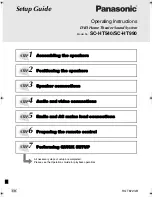
86
User's Guide Fireface 802
© RME
Examples for sending MIDI strings:
- Set input 1 to 0 dB: B0 66 68
- Set input 17 to maximum attenuation: B1 66 0
- Set playback 1 to maximum: B4 66 7F
- Set Output 16 to 0 dB: B8 75 68
Note: Sending MIDI strings requires to use programmer's logic for the MIDI channel, starting
with 0 for channel 1 and ending with 15 for channel 16.
Further functions:
- Trim Gains On: BC 66 xx (BC = MIDI channel 13, xx = any value)
- Trim Gains Off: BC 66 xx or select a submix
Select submix (fader) in third row:
- channel 1/2: BC 68/69 xx
- channel 3/4: BC 6A/6B xx
etc.
Input Gain control
is available via CC9, value range as the gain itself (up to 65). The MIDI
channel determines the controlled channel, from 1 to 16 (Fireface 802: 9 to 12). For this to
work,
Enable MIDI Control
in the Options menu has to be activated.
The
Reverb
and
Echo User Presets
can be changed via MIDI CC: B2 0C nn for Reverb preset
1 to 16, B3 0C nn for Echo preset 1 to 16
28.6 Stand-Alone MIDI Control
When not connected to a computer, the Fireface 802 can be controlled directly via MIDI. The
menu entry
Options / Enable Stand-Alone MIDI
in TotalMix FX activates this mode.
Note: When not needed the stand-alone MIDI operation should not be active, as the unit will
react on MIDI notes after power-on, and will also send MIDI notes.
Control is performed via both the
Mackie Control protocol
and some
standard
MIDI functions
(see below). In stand-alone mode not all functions known from TotalMix are available, because
some of them aren't hardware, but software routines. Functions like
Talkback
,
Mono
,
Solo
,
rela-
tive
ganging of the faders,
Monitor Main
and
Monitor Phones
are realized by complex software
code, therefore not available in stand-alone MIDI control operation.
Still many functions, and especially the most important functions to control the Fireface 802, are
implemented in hardware, thus available also in stand-alone mode:
•
All faders and pans of the first and third row
•
Mute of the input signal per channel
•
Ganging via 'Select'
•
Choice of the routing destination, i.e. the current submix
•
Sending of LED and display data to the MIDI controller
The second row (software playback) is skipped. The Fireface 802 sends display data as brief
information, enabling an easy navigation through lines and rows. Other data like PAN and mis-
cellaneous status LEDs are supported as well.
Summary of Contents for Fireface 802
Page 7: ...User s Guide Fireface 802 RME 7 User s Guide Fireface 802 General...
Page 12: ...12 User s Guide Fireface 802 RME...
Page 13: ...User s Guide Fireface 802 RME 13 User s Guide Fireface 802 Installation and Operation Windows...
Page 28: ...28 User s Guide Fireface 802 RME...
Page 29: ...User s Guide Fireface 802 RME 29 User s Guide Fireface 802 Installation and Operation Mac OS X...
Page 38: ...38 User s Guide Fireface 802 RME...
Page 39: ...User s Guide Fireface 802 RME 39 User s Guide Fireface 802 Inputs and Outputs...
Page 47: ...User s Guide Fireface 802 RME 47 User s Guide Fireface 802 Stand Alone Operation...
Page 50: ...50 User s Guide Fireface 802 RME...
Page 51: ...User s Guide Fireface 802 RME 51 User s Guide Fireface 802 TotalMix FX...
Page 53: ...User s Guide Fireface 802 RME 53...
Page 89: ...User s Guide Fireface 802 RME 89 User s Guide Fireface 802 Class Compliant Mode...
Page 94: ...94 User s Guide Fireface 802 RME...
Page 95: ...User s Guide Fireface 802 RME 95 User s Guide Fireface 802 Technical Reference...
Page 106: ...106 User s Guide Fireface 802 RME 36 Diagrams 36 1 Block Diagram Fireface 802...
Page 108: ...108 User s Guide Fireface 802 RME...
Page 109: ...User s Guide Fireface 802 RME 109 User s Guide Fireface 802 Miscellaneous...
















































